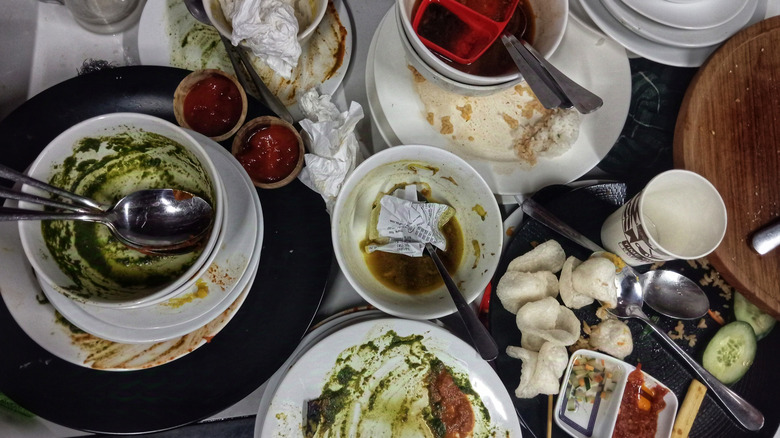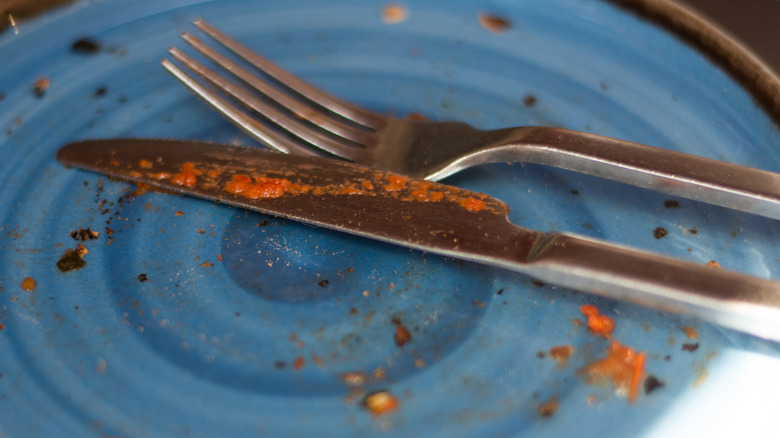Why Waiters Actually Hate When You Stack Your Plates At A Restaurant
It's an easy thing to do, even out of habit. You're in a restaurant and your server is busy but you don't want your dirty plates in front of you. You think you're helping by stacking them up and sliding them to the table's edge for easy pick up, right? No. As a former server, so many things are wrong with this scenario.
Are there two types of people? Some know how to stack in order of size and shape: a large plate on the bottom, layering up from there with all the utensils on top. Is it asking that much of others not to put a big plate on a smaller one, or slide a bowl with a spoon in it under a plate? It seems like a task that doesn't require special training or talent, but it created an unnecessary pet peeve for me, not to mention a few crashes en route to the kitchen.
Ah, the flashbacks I had watching the table next to me "help" their server while I was having lunch today. Sure, I thanked my customers back then as I grabbed their stack of dishes, hoping it wouldn't fall, but I was always reminded I had no idea what was in the pile as I inadvertently stuck my thumb into something mushy. So... helpful.
Some servers appreciate the help
Canadian server Meagan Keelaghan at DunnEnzies Pizza Co. in Kelowna, B.C. has a brighter outlook on stacking. She recognizes the gesture as the customer just trying to be helpful and says that most times they know how to stack properly. "What server doesn't love that? I don't mind at all. I love it. I offer them jobs," Keelaghan told The Takeout. Keelaghan added that the only negative was that she felt bad as it made her wonder if she was giving slow service, unable to clear each person's plate in a timely manner.
If you're wondering what to do right, Keelaghan noted that she appreciated customers who used the "universal signal" of being done eating by laying their knife and fork across their plate. She described it as a visual alert that they were ready to have their plate cleared so she didn't have to ask or keep interrupting their conversations (or chewing) to inquire if they were done.
Keelaghan agreed with me on other areas of serving and dealing with the public, though. She wished people would wait to be seated, but thought it was funny when they selected the only dirty table in the restaurant. She also noted with a laugh that some people show their character with direct conversation, more so than by being "helpful." We could both recall greeting customers with a "How are you today?" and have them abruptly reply, "I'll have a coffee." I bet they don't stack their dishes.

